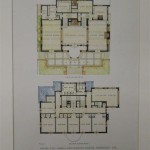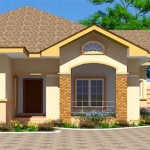Essential Aspects of Create House Plan 3D
Creating a detailed 3D house plan is crucial for any homeowner embarking on a construction or renovation project. It allows for meticulous visualization of the finished home, providing valuable insights into spatial arrangements and potential design flaws before construction begins.
Here are the essential aspects to consider when creating a comprehensive 3D house plan:
### 1. Accurate Measurements and DimensionsThe foundation of a realistic 3D house plan lies in precise measurements and dimensions. Measure the existing space or the proposed building site carefully, taking into account all dimensions, including room sizes, wall lengths, ceiling heights, and window and door placements.
### 2. Architectural Style and DesignChoose an architectural style that aligns with your preferences and complements the surrounding environment. Consider factors such as the roof pitch, exterior materials, window sizes, and overall aesthetic appeal. Utilize 3D modeling software to experiment with different design options.
### 3. Floor Plan LayoutThe floor plan layout should reflect your lifestyle and functional requirements. Plan the arrangement of rooms, hallways, and staircases effectively to ensure smooth flow and maximize space utilization. Define clear zones for designated activities, such as living, dining, sleeping, and storage.
### 4. Interior Design and FurnishingsVisualize the interior design and furnishings within the 3D house plan. Import models of furniture, appliances, and décor into the software to create a realistic representation of the finished space. This allows you to experiment with various color schemes, materials, and textures.
### 5. Lighting and Natural VentilationIncorporate natural light sources, such as windows and skylights, into the 3D house plan. This helps to optimize daylighting and reduce energy consumption. Consider the placement of artificial lighting to create a warm and inviting atmosphere.
### 6. Outdoor Spaces and LandscapingDon't forget to include outdoor spaces and landscaping in your 3D house plan. Design patios, decks, gardens, and swimming pools to enhance the functionality and aesthetic appeal of the property. Visualize how the different spaces will interact with the interior and exterior.
### 7. Accessibility and Safety FeaturesPay attention to accessibility and safety features in the 3D house plan. Ensure that the home is designed to accommodate individuals with disabilities, provide adequate fire safety measures, and incorporate ergonomic principles to minimize accidents.
### Software RecommendationsSeveral reputable software options are available for creating 3D house plans:
- SketchUp
- AutoCAD Architecture
- Revit
- Chief Architect
- Home Designer Pro
If you lack the time or expertise to create a detailed 3D house plan, consider hiring a professional architect or designer. Their experience and knowledge will ensure that your plan meets all necessary specifications and aesthetic standards.
By considering these essential aspects, you can create a comprehensive 3D house plan that accurately represents your vision and facilitates a seamless construction or renovation process.

3d Floor Plans

3d Floor Plans

How Much Do 3d House Plans Cost Faqs Answered Cedreo

3d Floor Plans

3d Floor Plans

What Is 3d Floor Plan How To Make It Benefits Cost

3d Floor Plans

3d Floor Plans

3d Home Design All You Need To Know

Automatically Convert 2d Floor Plans To 3d Cedreo








